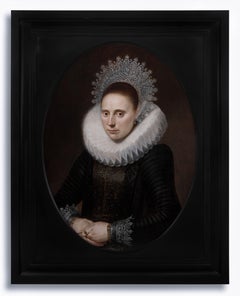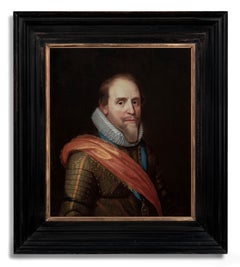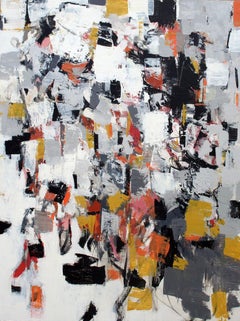Wood Panel More Art
2010s Wood Panel More Art
Oil, Wood Panel
2010s Abstract Wood Panel More Art
Encaustic, Wood Panel
17th Century Old Masters Wood Panel More Art
Oil, Wood Panel
17th Century Old Masters Wood Panel More Art
Oil, Wood Panel
21st Century and Contemporary Pop Art Wood Panel More Art
Cotton, Epoxy Resin, Glitter, Acrylic, Wood Panel
2010s Abstract Wood Panel More Art
Acrylic, Wood Panel
21st Century and Contemporary Wood Panel More Art
Wood Panel, Paper
17th Century Old Masters Wood Panel More Art
Oil, Wood Panel
17th Century Old Masters Wood Panel More Art
Oil, Wood Panel
21st Century and Contemporary Wood Panel More Art
Wood Panel, Paper
2010s Contemporary Wood Panel More Art
Epoxy Resin, Wood Panel
2010s Contemporary Wood Panel More Art
Epoxy Resin, Wood Panel
2010s Contemporary Wood Panel More Art
Epoxy Resin, Wood Panel
2010s Abstract Wood Panel More Art
Acrylic, Wood Panel
2010s Abstract Wood Panel More Art
Acrylic, Wood Panel
21st Century and Contemporary Contemporary Wood Panel More Art
Mosaic, House Paint, Wood Panel
21st Century and Contemporary Contemporary Wood Panel More Art
Mosaic, House Paint, Wood Panel
2010s Naturalistic Wood Panel More Art
Oil, Wood Panel
20th Century Post-Impressionist Wood Panel More Art
Oil, Wood Panel
21st Century and Contemporary Pop Art Wood Panel More Art
Metal
21st Century and Contemporary Contemporary Wood Panel More Art
Mosaic, House Paint, Wood Panel
21st Century and Contemporary Contemporary Wood Panel More Art
Mosaic, House Paint, Wood Panel
2010s Abstract Wood Panel More Art
Concrete
Early 2000s Contemporary Wood Panel More Art
Wood Panel, Screen
21st Century and Contemporary Abstract Wood Panel More Art
Glass, Resin, Glitter, Acrylic, Wood Panel
2010s Abstract Wood Panel More Art
Wood Panel, Acrylic
21st Century and Contemporary Pop Art Wood Panel More Art
Glass, Plastic, Glitter, Acrylic, Wood Panel
19th Century Italian School Wood Panel More Art
Oil, Wood Panel
21st Century and Contemporary Pop Art Wood Panel More Art
Resin, Glitter, Acrylic, Wood Panel
2010s Abstract Wood Panel More Art
Acrylic, Wood Panel
2010s Contemporary Wood Panel More Art
Copper
17th Century Baroque Wood Panel More Art
Oil, Wood Panel
Late 17th Century Flemish School Wood Panel More Art
Oil, Wood Panel
2010s Abstract Wood Panel More Art
Acrylic, Wood Panel
21st Century and Contemporary Impressionist Wood Panel More Art
Oil, Panel, Wood Panel
2010s Abstract Wood Panel More Art
Acrylic, Wood Panel
21st Century and Contemporary Impressionist Wood Panel More Art
Oil, Panel, Wood Panel
21st Century and Contemporary Impressionist Wood Panel More Art
Oil, Panel, Wood Panel
21st Century and Contemporary Impressionist Wood Panel More Art
Oil, Panel, Wood Panel
21st Century and Contemporary Impressionist Wood Panel More Art
Oil, Panel, Wood Panel
21st Century and Contemporary Impressionist Wood Panel More Art
Oil, Panel, Wood Panel
21st Century and Contemporary Impressionist Wood Panel More Art
Panel, Wood Panel, Oil
17th Century Old Masters Wood Panel More Art
Oil, Wood Panel
2010s Contemporary Wood Panel More Art
Brass
21st Century and Contemporary Modern Wood Panel More Art
Mixed Media, Acrylic, Glass, Resin, Glue, Wood Panel
2010s Contemporary Wood Panel More Art
Brass
2010s Contemporary Wood Panel More Art
Brass
2010s Contemporary Wood Panel More Art
Brass
2010s Contemporary Wood Panel More Art
Brass
2010s Contemporary Wood Panel More Art
Brass
1840s Outsider Art Wood Panel More Art
Wood Panel, Etching
21st Century and Contemporary Wood Panel More Art
Oil, Wood Panel
21st Century and Contemporary Wood Panel More Art
Oil, Wood Panel
2010s Abstract Wood Panel More Art
Acrylic, Wood Panel
2010s Naturalistic Wood Panel More Art
Silver
21st Century and Contemporary Abstract Wood Panel More Art
Acrylic, Wood Panel
2010s Wood Panel More Art
Wood Panel, Screen
21st Century and Contemporary Wood Panel More Art
Oil, Wood Panel


